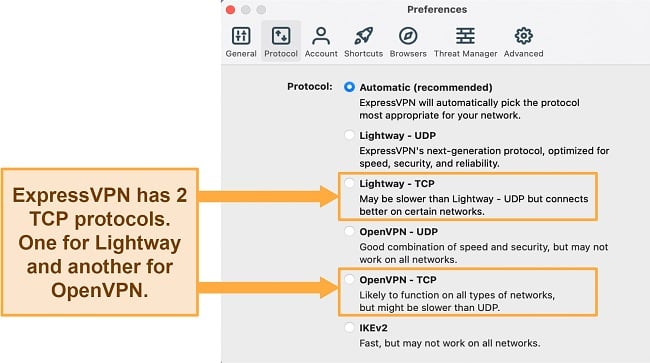Featured
Table of Contents
The 3 Most Common Vpn Problems And How To Fix Them
:max_bytes(150000):strip_icc()/vpn-D3Damon-5782a3675f9b5831b5cdd2c3.jpg)
The Routing and Remote Access snap-in lives within the Microsoft Management Console, referred to as the MMC. There are multiple ways to access the MMC. You can select the console from the Start menu's Programs options, within the Administrative Tools folder within Windows server's Control Panel or by typing mmc at a command timely.
As Tech, Republic's Brandon Vigliarolo shows within his video at the start of this post, the Services console displays the status of the Routing and Remote Access entry. From within the Solutions console and with the Routing and Remote Access entry highlighted, you can click Start the Service or right-click the entry and choose Restart.
Often the VPN customer and VPN server are set to using various authentication approaches. Confirm whether an authentication mistake is the issue by opening the server console. Yet another technique of accessing the MMC is to type Control+R to open a command timely in which you can type mmc and struck Enter or click OK.
If the entry isn't present, click File, select Add/Remove Snap-in, pick the Routing and Remote Access alternative from the options and click Include, then OK. With the Routing and Remote Access snap-in added, right-click on the VPN server and click Properties. Then, review the Security tab to verify the authentication technique.
Fix Vpn Not Working Problems And Issues In Windows 11/10
Ensure the VPN customer is set to the authentication technique defined within the Security tab. Generally the items simply evaluated are accountable for the majority of VPN connection rejection errors. Other basics must be correct, too. If the Windows Server hosting the VPN hasn't signed up with the Windows domain, the server will be unable to confirm logins.
Each Web-based VPN connection normally uses two different IP addresses for the VPN client computer. This is the IP address that's used to establish the initial TCP/IP connection to the VPN server over the Internet.

This IP address normally possesses the very same subnet as the local network and therefore enables the client to interact with the local network. When you established the VPN server, you need to set up a DHCP server to designate addresses to customers, or you can create a bank of IP addresses to assign to clients straight from the VPN server.


If this option is chosen and the efficient remote gain access to policy is set to allow remote access, the user will be able to connect to the VPN. I have been not able to re-create the situation personally, I have actually heard rumors that a bug exists in older Windows servers that can trigger the connection to be accepted even if the reliable remote access policy is set to reject a user's connection.
Fix Bitdefender Vpn Errors 182, 99, 12, 9, 4, 2 & More
:max_bytes(150000):strip_icc()/vpn-D3Damon-5782a3675f9b5831b5cdd2c3.jpg)
Another common VPN issue is that a connection is effectively developed but the remote user is unable to access the network beyond the VPN server. Without a doubt, the most typical reason for this issue is that approval hasn't been granted for the user to access the whole network. To enable a user to access the entire network, go to the Routing and Remote Access console and right-click on the VPN server that's having the issue.
At the top of the IP tab is an Enable IP Routing check box. If this check box is enabled, VPN users will have the ability to access the remainder of the network, presuming network firewall softwares and security-as-a-service settings permit. If the checkbox is not selected, these users will be able to gain access to just the VPN server, however absolutely nothing beyond.
If a user is calling directly into the VPN server, it's generally best to set up a fixed path in between the client and the server. You can set up a fixed path by going to the Dial In tab of the user's residential or commercial properties sheet in Active Directory Users and Computers and choosing the Apply A Fixed Path check box.
Click the Include Route button and then go into the location IP address and network mask in the space provided. The metric ought to be left at 1. If you're utilizing a DHCP server to appoint IP addresses to clients, there are a number of other problems that could trigger users not to be able to go beyond the VPN server.
Common Vpn Connectivity Issues
If the DHCP server designates the user an IP address that is currently in usage in other places on the network, Windows will discover the conflict and avoid the user from accessing the remainder of the network. Another common issue is the user not receiving an address at all. The majority of the time, if the DHCP server can't assign the user an IP address, the connection won't make it this far.
254.x. x variety. If the client is designated an address in a variety that's not present within the system's routing tables, the user will be not able to navigate the network beyond the VPN server. Other issues can contribute to this issue, too. Guarantee the resources the user is trying to access are in fact on the network to which the user is connecting.
A VPN connection to the other subnet might, in reality, be needed. A firewall software or security as a service solution might likewise be to blame, so don't forget to examine those solutions' settings, if such components are present in between the VPN server and the resources the user seeks to reach.
The very first possibility is that one or more of the routers involved is performing IP package filtering. I advise inspecting the customer, the server and any makers in between for IP packet filters.
Latest Posts
The 5 Best Business Vpn To Secure Your Team In 2023
The Best Free Vpn For Android
How To Troubleshoot Common Issues With Avg Secure Vpn